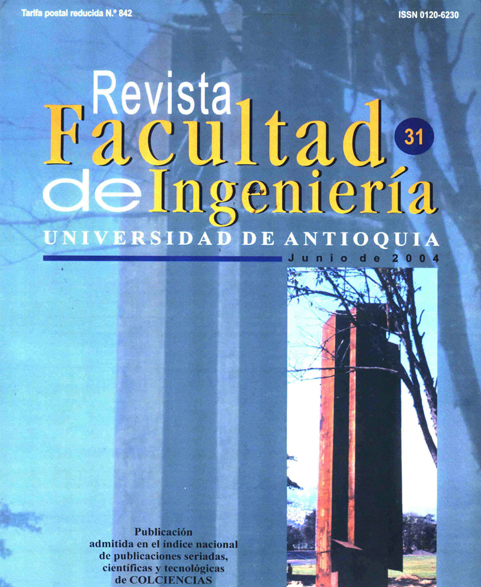Performance of silica gel filters used in an air conditioning system based in a vapor compression refrigeration system
DOI:
https://doi.org/10.17533/udea.redin.344500Keywords:
Solid dehumidifiers, energy efficiency, adsorption, air conditioningAbstract
In order to determine the humidity adsorption rate in a filter made out of silica gel, a series of experiments were carried out where the mass of silica gel per unit area and the velocity of the air coming to the filter were studied. The results showed that the amount of humidity removed by the filter increases as the density of silica gel is increased and the velocity of the air is reduced. However, a dimensionless variable obtained between the silica gel and the amount of humidity removed shows that the process is more effective as the density is reduced. The results are presented as a function of time, in a 50 minutes time frame.
Downloads
References
Howell, Ronald et al. “Simulation of refrigerated display cases performance in supermarkets”. En: Proceedings of the IASTED International Conference. Banff. Canadá. 1997. pp. 173 -176.
Howell, Ronald et al. “Effects of indoor relative humidity on refrigerated display cases performance”. En: Proceedings of CLIMA 2000 Conference. Bruselas. Bélgica. 1997.
Bula, Antonio y Márquez, Antonio. “Modelación matemática y simulación de un sistema de acondicionamiento de aire en estado transitorio”. En: Revista Ingeniería y Desarrollo. N.° 11. 2002. pp. 83-100.
Bula, Antonio y Méndez, Felipe. “Ahorro de energía eléctrica por implementación de filtros desecantes en sistemas de acondicionamiento de aire por compresión de vapor”. En: Revista Facultad de Ingeniería. Universidad de Antioquia. N.° 31. Medellín. Junio. 2004.
Bula, Antonio et al. “Thermodynamic simulation of a solar absorption refrigeration system, generator heat exchanger”. En: Conferencia Internacional en modelado, simulación y redes neuronales MSNN - 2000. Universidad de los Andes. Mérida, Venezuela. 2000.
Downloads
Published
How to Cite
Issue
Section
License
Revista Facultad de Ingeniería, Universidad de Antioquia is licensed under the Creative Commons Attribution BY-NC-SA 4.0 license. https://creativecommons.org/licenses/by-nc-sa/4.0/deed.en
You are free to:
Share — copy and redistribute the material in any medium or format
Adapt — remix, transform, and build upon the material
Under the following terms:
Attribution — You must give appropriate credit, provide a link to the license, and indicate if changes were made. You may do so in any reasonable manner, but not in any way that suggests the licensor endorses you or your use.
NonCommercial — You may not use the material for commercial purposes.
ShareAlike — If you remix, transform, or build upon the material, you must distribute your contributions under the same license as the original.
The material published in the journal can be distributed, copied and exhibited by third parties if the respective credits are given to the journal. No commercial benefit can be obtained and derivative works must be under the same license terms as the original work.










 Twitter
Twitter